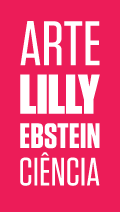Revolução de 1932
E A HISTÓRIA DE UM HOSPITAL
-
 Lilly Ebstein | Clique para ver +
Lilly Ebstein | Clique para ver + -
 Faculdade de Medicina | Clique para ver +
Faculdade de Medicina | Clique para ver + -
 História | Clique para ver +
História | Clique para ver +
Artigo que relata a atuação em um hospital de guerra durante a Revolução de 32, de Alipio Corrêa Netto, Eduardo Etzel e Francisco Cerrutti, foi ilustrado por Lilly.
A Faculdade de Medicina se envolveu com a Revolução de 1932, a exemplo da Faculdade de Direito, da Escola Politécnica e de outras instituições que tornaram a causa de 32 uma “causa paulista”. Lilly ilustrou o artigo “Cirurgia de Guerra no Hospital de Sangue de Cruzeiro”, de Alipio Corrêa Netto, Eduardo Etzel e Francisco Cerrutti, publicado em 1934 nos Annaes da Faculdade de Medicina de São Paulo.
O artigo registra a experiência dos três médicos na montagem do hospital na cidade de Cruzeiro, próximo a Minas Gerais. Os médicos chegaram à localidade em 6 de julho de 1932 e organizaram um hospital de campanha com 65 leitos. Conforme escrevem os autores: “Logo depois de irrompido em São Paulo o movimento armado em prol da constitucionalização do país, manifestou-se a necessidade de organização de um hospital de sangue, em Cruzeiro, para atender uma linha de combate relativamente extensa, que, em forma de semicírculo, se dispunha em relação àquela localidade da zona norte do Estado de São Paulo, no Vale do Paraíba. Tendo-nos apresentado ao Serviço Sanitário para prestar serviços médicos numa das linhas de frente, fomos incontinenti enviados para Cruzeiro”.
O hospital de campanha tinha duas grandes enfermarias, para ferimentos leves e para operações graves. Também havia uma enfermaria com sete leitos para os oficiais. Os feridos podiam ser enviados à Santa Casa de Misericórdia. “Essa disposição foi amplamente divulgada como sendo um plano arquitetado e estudado antes dos combates, no sentido de dar atendimento aos feridos de guerra na região onde se supunha um combate sem precedentes”, escreveram André Mota e Marco Cabral dos Santos.[1]
O hospital funcionou por 58 dias, de 16 de julho a 12 de setembro de 1932 e nesse período foram hospitalizados 1.006 doentes de clínica cirúrgica, dos quais 588 feridos de guerra e 418 militares acometidos de afecções cirúrgicas (fraturas, ferimentos acidentais e outros). Com os 422 pacientes que passaram pelo ambulatório foram realizados 1.428 atendimentos. Foi uma luta violenta, escrevem os médicos. Em uma das localidades, a Fazenda Batedor, “foi uma posição disputada e que se tornou célebre nas conversas de rua devido à violência, dizia-se, dos combates aí travados. Os jornais descreveram verdadeiras ações corpo a corpo em que todas as armas entravam em campo”.[2]
[1] Mota, André e Cabral dos Santos, Marco. São Paulo 1932 Memória, Mito e Identidade. São Paulo, Alameda, 2010, p. 142.
[2] Corrêa Netto, Alipio; Etzel, Eduardo e Cerruti, Francisco. “Cirurgia de guerra no Hospital de Sangue de Cruzeiro”. In: Annaes da Faculdade de Medicina da Universidade de São Paulo, Vol. X, 1934, Fascículo 1º, pp. 62 e 63.aulo, Vol. X, 1934, Fascículo 1º, pp. 62 e 63.
Lilly Ebstein Lowenstein (1897-1966) viveu entre a ciência e a arte, desenhando e realizando fotografias nos campos da medicina e da zoologia. Em seu trabalho, Lilly conjugava o conhecimento técnico da fotografia e do desenho, o estudo das ciências e um notável talento estético. Nascida na Alemanha, ela estudou na Escola Lette-Verein em Berlim entre 1911 e 1914. Em 1925 imigrou com o marido e dois filhos para São Paulo. Em 1926, tornou-se desenhista e fotomicrógrafa da Seção de Desenho e Fotografia na Faculdade de Medicina (USP, a partir de 1934), da qual seria chefe por trinta anos a partir 1932. Entre 1930 e 1935 Lilly foi colaboradora do Instituto Biológico de Defesa Agrícola e Animal, principalmente da sua Seção de Ornitopatologia. Uma vida com arte dedicada à pesquisa e difusão da ciência.


